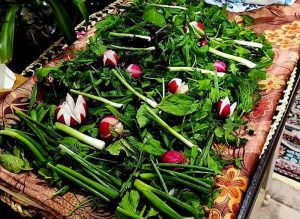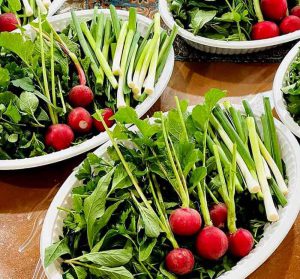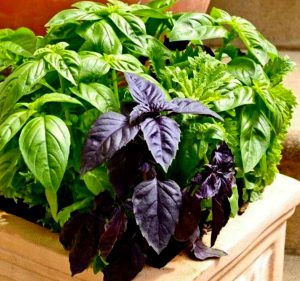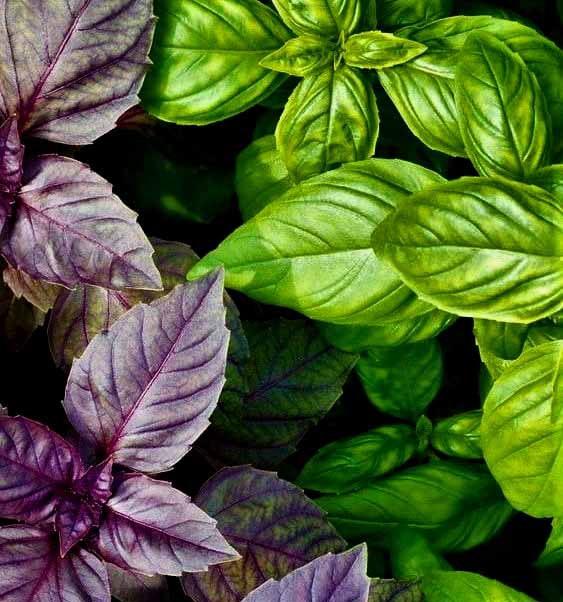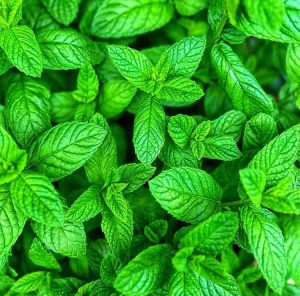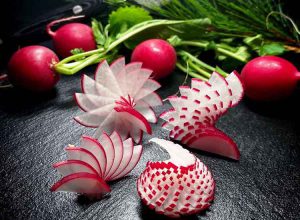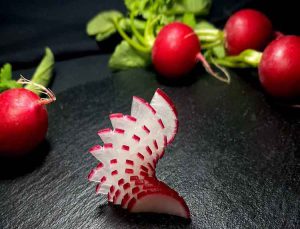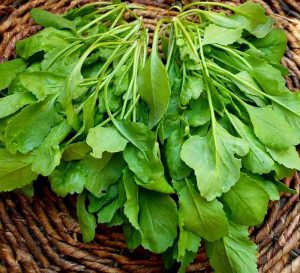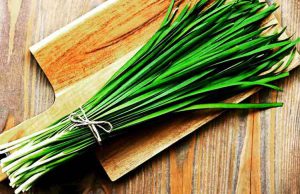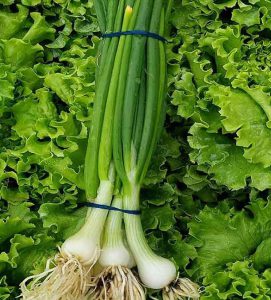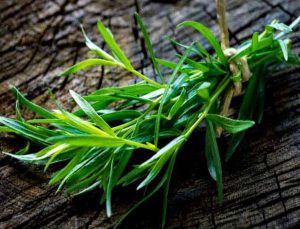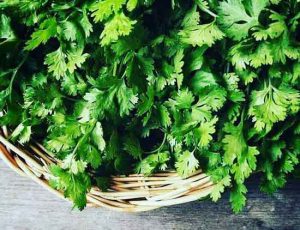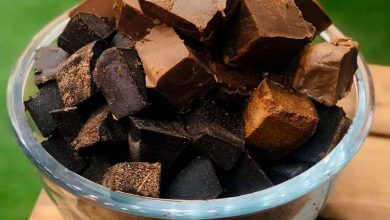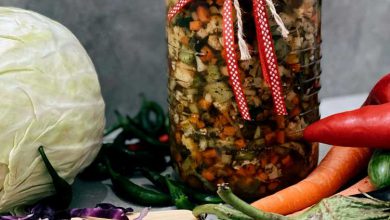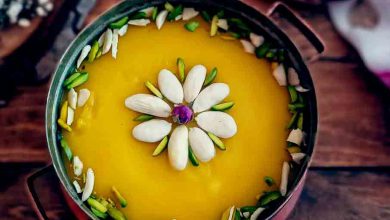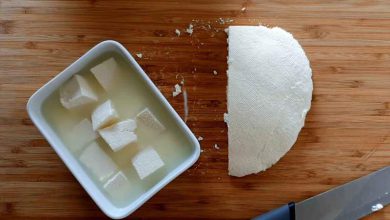Sabzi Khordan | Persian Fresh Vegetables+Pictures
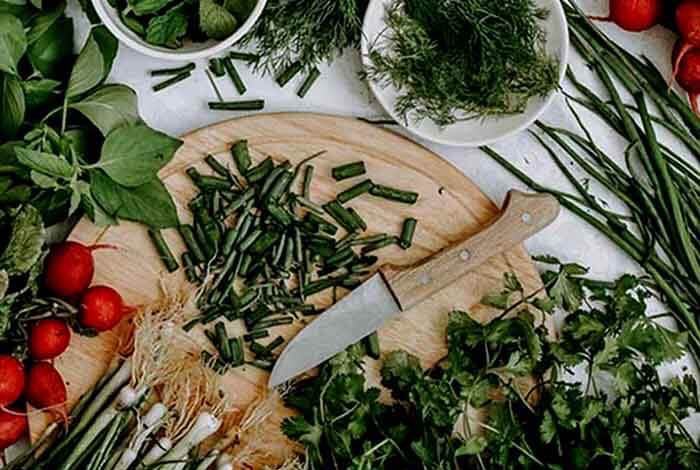
Sabzi khordan, which is one of the most consumed vegetables on our Iranian table, is an indispensable part of our Iranian tables.
Eating vegetables consists of several types of vegetables that have many benefits and properties. In general, consuming vegetables during the day is very beneficial for the health of the body.
It is highly recommended by doctors, especially for those who have a weak immune system.
What vegetables does sabzi khordan include?
Sabzi khordan includes basil, watercress, radish, coriander, parsley, onion, leek, etc.
Today, with machine life, it is less common to eat vegetables while eating food.
Vegetables are part of a healthy, balanced diet that can keep your body healthy, so it’s important to eat enough of them.
Raw vegetables have played a prominent role in our Iranian table for a long time. Still, the types of these vegetables can be different according to the taste and desire of people. Usually, the types of vegetables to eat include leek, parsley, watercress, basil, mint, savory, radish, chives and even tarragon and sometimes dill.
According to the research, it is necessary to eat 5 portions of fruits and vegetables per day, each portion containing at least 80 grams.
In addition to the general health of the body consumption of fresh fruits and vegetables is effective in reducing the incidence of heart diseases and types of cancer.
As you know, in general, all kinds of vegetables are very useful for health because they contain a lot of fiber, vitamins, and minerals needed by the body, fighting and preventing cancer, reducing the risk of cardiovascular diseases, and finally strengthening the immune system.
And fighting against all kinds of diseases is one of the most important properties of eating vegetables.
Sabzi Khordan is one of the most important members of the food pyramid. To have a healthy diet, we should eat some vegetables every day.
Nutrition experts recommend people consume 3 to 5 “servings” of vegetables daily. Vitamins and minerals in vegetables are good for health.
In this article, we examine the types and properties of sabzi khordan. Stay with us until the end of the article with meals cook site.
Sabzi khordan contains:
1.Basil
2.Mint
3.Radish
4.cress
5.Leek
6.Chives
7.Tarragon
8.Coriander
Now we are going to learn about the benefits and usage of sabzi khordan:
1. Basil
The nature of basil is hot and dry. This vegetable is consumed as a vegetable and can be found in green basil and purple basil. In addition to being used in cooking, this plant also has many medicinal properties.
You can add its fresh leaves to salads, sandwiches, and sauces and eat its dried leaves in winter.
Related: kuku loobia sabz.
Benefits of basil:
- Nerve relaxant
- Headache treatment
- Relieve sore throat
- Asthma treatment
- Eliminates fever
- Anti-bloating and flatulence
- treatment for diarrhea
- Anti-nausea and vomiting
- Cardiovascular health
- Eliminate anemia
- A good night’s sleep
- anti-aging
- Useful for women
- Treatment of canker sores
2. Mint
Mint is a small plant with a great smell that grows quickly and has many benefits. Growing and keeping it at home can keep animals and insects like ants and flies away from you. The health benefits of this herb are incredible.
It doesn’t matter if mint is fresh or dried this aromatic herb works wonders. Mint is an important part of sabzi khordan.
This vegetable is one of the good disinfectant and has a soothing effect on local pains. In traditional medicine, mint extract is used as an anti-bloating and disinfectant for the digestive system.
In modern pharmaceuticals, in addition to the drugs made based on the effective ingredients of mint, it is also used as a flavoring agent for bad-tasting drugs.
Sabzi Khordan is served with albaloo polo, dami gojeh, kashke bademjan,mirzaghasemi, abgoosht, Persian vavishka , dal adas, and loobia polo.
Benefits of mint:
- Sip peppermint tea to relieve a sore throat.
- Mint is decoction and lowers fever.
- Wash your nose with mint tea when you have a cold.
- To relieve toothache, put peppermint in your mouth and chew until the pain decreases
- If you have an earache, put a few drops of the mixture of mint extract and honey in the ear to relieve the earache.
- To get rid of hiccups, nausea, and vomiting, you can also eat mint with sour pomegranate juice.
- It is useful to drink mint tea to relieve colic, intestinal pain, and digestion.
Related: kuku sabzi.
3. Radish
Radish is one of the summer sabzi khordan without fat and cholesterol. Fiber is one of the most important ingredients in radish. Also, radish has vitamins C, K, B6, niacin, and folate. The leaves of this plant contain 6 times more vitamin C than its roots.
These leaves are useful for treating jaundice. In addition, radish contains calcium, potassium, copper, folic acid and anthocyanin, a type of strong antioxidant. Consuming radish regularly makes the bowel move easily, thus leading to a gradual improvement in appetite.
Benefits of radish:
- Regulation of fat metabolism
- Cleansing the stomach and treating poisoning: In the past, during food poisoning, some radish seeds were given to the patient with coriander.
- Treatment of heartburn: To relieve the burning sensation, you can use the infusion of its leaves instead of radish.
- It is useful for preventing the occurrence of cancers such as colon, prostate, breast, kidney, and stomach.
- Regulation of body metabolism
- Effective for treating rheumatism
- Radish seeds are appetizing
- Increase breast milk by consuming radish seeds
- Help digestion by consuming radish leaves
- Improve blood circulation
- cure fever
- Nice and lightening the color of the face
- Removing bruises under the eyes, trauma, scars, and freckles using horseradish and honey poultice
- Horseradish ointment is useful for bad wounds and watery boils
- To prevent insect bites, apply horseradish juice on the skin
- Preventing the activity of an enzyme that causes the formation of dental plaque
- Preventing tooth decay and falling out
- The smell of radish is good for the sinuses
- Prevention of blood clots
- Destroying cancer cells and having a positive effect on chemotherapy
Related: khoresh ghormeh sabzi.
4. cress
Cress is a part of sabzi khordan that grows rapidly in the presence of water and is said to be one of the oldest vegetables. This plant has dark green leaves and grows in spring rainwater.
This plant is a cruciferous family, along with cabbage, broccoli, arugula, and Brussels sprouts. It has a hollow stem that floats, while the leaf structure has a feather-like arrangement where the leaves form a common axis on both sides. This plant has a spicy and peppery taste and crunchy stems.
Benefits of cress:
- The best source of vitamin C
- Boosting the immune system
- Prevent cataracts
- Reduce asthma symptoms
- Enhance iron absorption
- Excellent anti-cancer source
- Prevent breast cancer
- Prevent colon cancer
- Excellent source of calcium
- Reduction of osteoporosis
- Stronger teeth
- Thyroid regulation
- stabilization of blood sugar levels
- Prevention of anemia
- cough treatment
- Healthier hair
- Prevent diarrhea
- Weight Loss
- Control of gallbladder function
- Useful for the digestive system
5. Leek
Leeks are rich in vitamins, and for this reason, ancient Egyptians, Greeks, and Romans used leeks for their medicinal properties. Among its many benefits, eating leeks at night improves food synthesis and digestion as well and It will facilitate a restful and fresh night’s sleep.
If you are one of those people who decide to eat a light dinner to avoid gaining weight, this is definitely your best option. Remember that dinner should be balanced and include a variety of foods without neglecting the nutrients needed to finish the day.
Benefits of leek:
- Effective in weight loss
- Helping better digestion and absorption of materials
- Fight infections
- Prevent fluid retention in the body
- Strengthen the immune system
6. Chives
Chives is a combination of onion and leek and its appearance is very similar to the combination of onion and leek. Both parts of chives are edible, and chives can be used as a seasoning in cooking. Chives is a part of sabzi khordan.
Chives taste milder than onions. The green stems of chives have a mild spiciness and the spiciness of the white base is more. Chives are mostly used in preparing soups, salads, fried potatoes, and as a flavoring.
Chives are rich in vitamins, antioxidants, and minerals, and the properties of chives are many. According to traditional medicine, chives are hot and dry. Chives have many healing properties and benefits.
These unique healing properties of chives are due to the fact that chives contain high amounts of antioxidants, flavonoids, vitamins such as vitamin A, vitamin C, vitamin K, vitamin E, niacin, pantothenic acid, pyridoxine, riboflavin, folic acid, minerals including Potassium, calcium, copper, iron, magnesium, manganese, phosphorus, selenium and zinc.
Benefits of chives:
- Strengthen and increase hair growth.
- Treatment of dandruff.
- Head lice treatment.
- skin rejuvenation.
- Lightening of facial skin color.
- Remove acne and pimples.
- Accelerate wound healing.
Related: kale gonjeshki.
7. Tarragon
Tarragon, also known as Estragon, is a perennial plant native to Eurasia and the northern regions of North America. This plant can grow four to six feet tall and can spread quickly through rhizome roots.
Tarragon has many health benefits, from everything from antioxidants to muscle growth to aiding digestion. arragon can be used in cooked and sauced dishes or boiled in water to make an infusion.
Benefits of tarragon:
- Tarragon fights free radicals in the body.
- It prevents the growth of cancer cells.
- Keep your heart healthy.
- It reduces blood sugar in diabetic patients.
- Prevents anemia.
- Protects the intestinal mucosa.
- Prevents muscle cramps.
- Keeps bones healthy.
- It strengthens your immune system.
- Strengthen teeth.
- Reduce inflammation symptoms.
- Keeps the eye healthy.
- It acts as a natural diuretic.
- Reduces toothache.
- Reduces insomnia symptoms.
- This part of Sabzi Khordan helps relieve anxiety.
- Reduces body odor.
- It helps to reduce the symptoms of anorexia.
- Improves the function of the digestive system.
- Prevents constipation.
- Helps to build muscle mass.
- Relieves premature menstrual syndrome.
- It keeps the body healthy.
- Maintains normal blood pressure levels.
- It relieves stress.
- It acts as a detoxifying agent.
You can also read: khoresh havij.
8. Coriander
Coriander is a part of sabzi khordan that is widely used in food preparation. This plant, which is native to Southwest Asia and West to North Africa, is widely used in the Middle East, the Mediterranean region, India, South Asia, Latin America, China, and Africa.
Coriander, in addition to giving a pleasant taste and smell to food, also has a high nutritional value, which has been discussed in this section on health and moist health.
You can be served sabzi khordan with paneer and sangak bread.
Coriander is a spice produced from the round, tan-colored seeds of the coriander plant (Coriandrum sativum), which is a member of the parsley family. The word coriander can be used to describe the entire plant: leaves, stems, seeds, and all. But when speaking of coriander, most people are referring to the spice produced from the seeds of the plant.
sourced: https://www.thespruceeats.com/
Benefits of Coriander:
- Coriander contains vitamin A, vitamin C, vitamin B6, iron, magnesium, calcium, potassium and fiber. Coriander vegetable is known as a stomach medicine and improves digestion and digestion and research shows that its consumption causes lead excretion and aluminum, too.
- Coriander has anti-bloating and appetite properties.
- Coriander seed infusion prevents seminal fluid.
- Coriander prevents food from turning sour in the stomach and relieves the pain of bile to a great extent. Coriander seeds are very good for treating obsessions and suffocation.
- Coriander is known as a blood sugar-lowering vegetable, and it does this by stimulating the secretion of insulin. This effect is so great that it is also called an anti-diabetic plant.
- It is possible to treat mouth pimples and relieve mouth pain with this part of Sabzi Khordan
- Consuming coriander is useful for improving liver function
- Coriander is useful for fighting salmonella bacteria
- It has anti-inflammatory properties and relieves the symptoms of arthritis
- Coriander consumption protects the body against urinary tract infections
- Coriander is also beneficial for women, especially those who experience heavy bleeding during their menstrual periods. To use this healing property of coriander, you can boil six grams of its seeds in 500 mg of water, and after adding sugar to it, use this mixture hot.
- Coriander juice is hypnotic. For this purpose, you should eat 30 grams of raw coriander juice with sugar. Consuming more than this amount will cause lethargy.
- Eating coriander has a very effective effect on reducing sexual power and disturbing erections.
- Coriander has an expectorant effect
FAQ
1. What is the typical seasoning used in Sabzi Khordan?
Sabzi Khordan is often served with fresh herbs such as basil, mint, tarragon, and watercress, which provide their own natural flavors. Some people may also sprinkle salt or pepper on the vegetables.
2.Is Sabzi Khordan a vegan dish?
Yes, Sabzi Khordan is a vegan dish as it consists of fresh vegetables and herbs.
3. How do I store leftover Sabzi Khordan?
You can store Sabzi Khordan in an airtight container in the refrigerator for up to 2-3 days.
Did you like the sabzi khordan recipe?
- If you have experience eating any vegetables, please say your comment.
- If you are looking for vegetarian food, I suggest you sabzi khordan.
- You can ask me questions about Sabzi Khordan in the comments. I will answer your questions as soon as possible.
- If you make this appetizer and love the taste of it, please share your pic with us on Facebook & mail.
